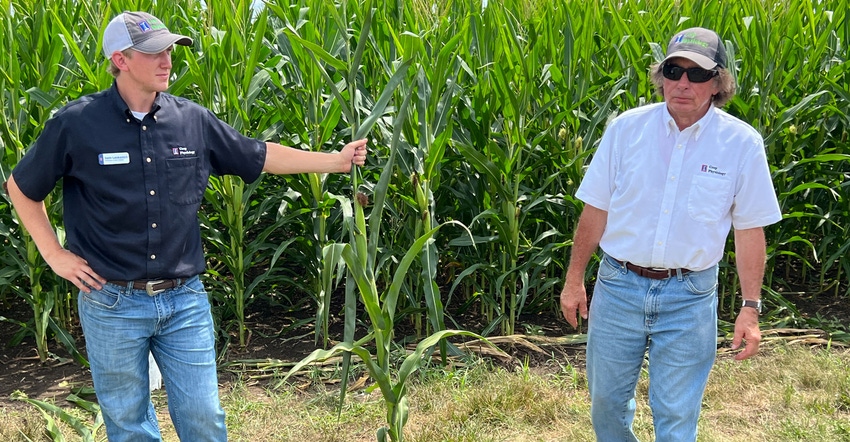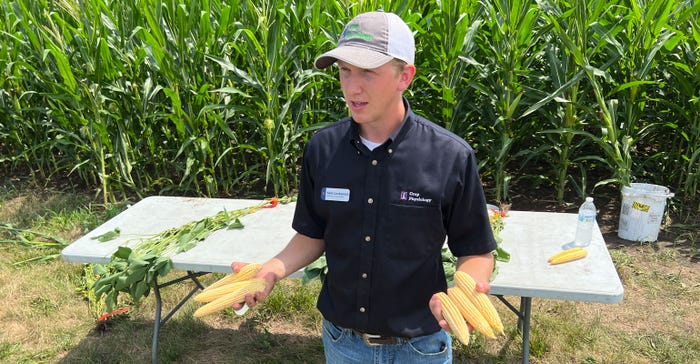August 25, 2022

Fred Below, University of Illinois professor of plant physiology, was admittedly a skeptic when approached about short-stature corn. “I just didn’t think it would work,” he recalls. “But I’m excited by what I’m seeing.”
For Below, understanding the ways a plant works is key to maximizing yield. Short-stature corn being developed by Bayer Crop Science is planted in a range of trials across the country, including Below’s high-yield plots. And he’s finding that this new design in corn brings some enhancements to the familiar plant.
An observer of short-stature corn will immediately see the shorter internode distance lower in the plant. That’s why it’s shorter. But for a plant physiologist, there’s another benefit. “Those shorter internodes mean that the plant’s energy is going into ear development,” Below says. Internodes above the ear appear like a conventional corn plant and don’t matter to ear development.
Below explains that a corn plant only has so much energy to devote to different areas of growth. By shortening the lower internodes, the plant can put more energy into ear development. And the lower stalk is thicker, helping the plant stand up to wind. “We have a new thing called a derecho happening, and thicker stalks can help,” he says.
He adds that this change in the energy distribution in the plant from stalk to ear is a kind of an “unintended consequence” of short-stature corn. “You’re saving energy and getting a bigger ear.”
Other corn yield builders
Applying crop protection products like fungicides or adding crop nutrients later in the season when the plant may need a boost is a lot easier with short-stature corn. This can help build yield by allowing more in-season attention to the crop, Below notes.
And short-stature corn stands up to higher plant populations in narrower rows. In his high-yield plot, Below has a 45,000 population planted on 20-inch rows. Even with that higher population, which can reduce root mass, that’s not happening with this new corn.
During a field presentation, Sam Leskanich, a graduate student working with Below, showed six ears of corn — three from a 30-inch row plot planted at 35,000 population and three from a 20-inch row plot planted at 45,000 population with the short-stature corn.

Below notes the ears look similar, but with that higher-population corn, he’ll see a 50-bushel-per-acre difference in yield.
When looking at the efficiency of the plant, Below points to another issue: harvest index. That’s a percentage of crop-to-plant biomass, which is a measure used to determine yield. Conventional corn when measured will have a 52% harvest index. That’s the amount of the total crop biomass that ends up in the kernels.
For short-stature corn, which has less overall biomass but produces similar ears, Below says the harvest index jumps to 56%.
While Bayer is still working through the launch of short-stature corn, the product is performing well in trial plots. And he sees it as a way to meet a growing need for higher plant populations in corn.
About the Author(s)
You May Also Like






